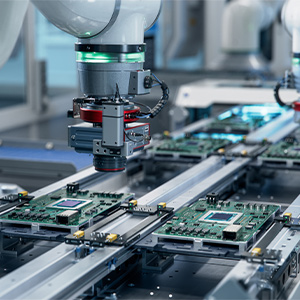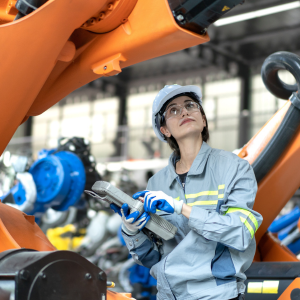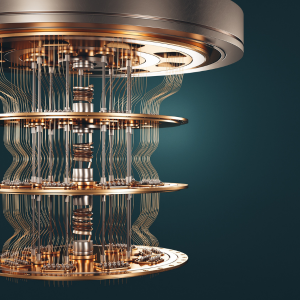What Are the Differences Between IoT and IIoT?
Post By: Ryan King On: 12-11-2023 - Automation & Control - Industry 4.0 - Industry Trends - Manufacturing
IoT – the Internet of Things – can be compared to a mathematical set. IIoT – the Industrial Internet of Things – is a subset of that group.
Both work on common principles, but IIoT is a defined area of IoT:
-
IoT involves mainly consumer activities, while IIoT is devoted to industrial applications.
-
IoT aims to enhance quality of life, while IIoT systems aim to improve productivity and efficiency in industrial settings.
-
IoT includes many applications, from consumer electronics to life-saving medical devices and wearables, even reaching city infrastructure. IIoT centres primarily on automating and optimising industrial processes.
What is IoT?
IoT refers to everyday devices and systems connected and interacting via the internet. They have embedded software to facilitate data exchange and processing, sensors, and other technologies that allow remote control and monitoring. In this way, they offer enhanced accuracy, efficiency and the possibility of significant economic growth.
IoT is integral to our digital landscape in various sectors like home automation, entertainment, transportation and healthcare. As well as enhanced life quality, the IoT helps improve our safety and security in many ways.
What is IIoT?
The IIoT focuses on industry, applying IoT technologies to industrial processes and applications. It's found in many sectors, including manufacturing, energy management and logistics.
IIoT leverages advanced digital technologies to enhance industrial processes, improving productivity, safety and operational efficiency. These may include intelligent sensors, big data, AI/ML (machine learning), and machine-to-machine (M2M) communication. Such systems offer benefits that include autonomous operations, real-time monitoring and analysis and predictive maintenance.
Some IoT Applications
IoT has transformed many ordinary objects into "smart" devices. These can interact in entirely new ways – with humans, their environment and other devices. You'll find them in many familiar situations, such as:
-
Smart homes with interconnected lighting and temperature control systems, security and household appliances.
-
Intelligent cities improve urban environments with IoT-managed energy grids, traffic and waste management systems and public safety.
-
Connected vehicles enhance your driving experience with entertainment, traffic updates, real-time navigation, vehicle diagnostics and many other benefits.
-
Wearables enhance your quality of life by collecting health-related data and monitoring your activity levels, sleep patterns, etc.
Some IIoT Applications
IIoT is mainly used in industry to automate production processes and optimise business systems. You can use it to improve product quality, increase efficiency and save costs in several areas, such as:
-
Supply chain and logistics management, improving efficiency with automated inventory management, real-time tracking and predictive analytics for demand planning.
-
Predictive maintenance, continuously monitoring industrial equipment to identify potential problems before they cause failures. Preventive maintenance extends equipment life and prevents costly downtime.
-
Smart grids aid efficient energy management within an industrial environment, using smart meters, sensors and digital communications.
Critical Differences Between IoT and IIoT
1. Scale and Scope
IoT governs everyday connected devices like smartphones, wearables and home appliances.
IIoT involves automating complex industrial processes and large-scale M2M communication.
2. Precision and Complexity
IoT devices typically perform simple tasks like activating security systems or adjusting temperatures.
IIoT performs complex operations demanding high precision, like variable equipment speed and product quality control.
3. Connectivity and Interoperability
IoT devices generally use standard home or office networks and common communication protocols to connect to the internet.
IIoT employs more robust systems with specialised industrial communication protocols for secure, reliable, high-speed data transfer. Industrial equipment and machinery are so diverse that interoperability is a challenging barrier to overcome.
IoT and IIoT use standard M2M protocols – most notably, Message Queuing Telemetry Transport (MQTT).
4. Security Protocols
Security is paramount in all internet-connected operations. However, IoT devices typically exchange less sensitive data and may use less stringent security protocols.
IIoT systems handle critical data and control systems for industrial applications, where a security breach could have catastrophic consequences. IIoT systems, therefore, implement far more rigorous and advanced security protocols. These might include intrusion detection systems, data encryption and regular security audits.
5. Programmability
Most IoT devices have pre-programmed functionalities designed for general consumer demands. Although you can customise some, they usually offer only limited programmability.
IIoT systems are designed for different industries and companies with specific needs. Therefore, They can be tailored to each customer with greater flexibility. IIoT devices are highly programmable for making autonomous decisions and performing complex tasks. With machine learning algorithms, they can even learn from previous experience.
Would You Ever Need To Choose Between IoT and IIoT?
This situation isn't likely. Depending on your specific circumstances and usage requirements, whether you're choosing a system for consumer use or an industrial complex should be obvious.
The IoT is geared to simplifying your life with connected devices like smartphones and tablets. It can enhance your home with intelligent systems and offers many user-friendly applications and devices designed to make your life more enjoyable and convenient.
The IIoT is aimed at business owners and industrial operations. It offers many powerful tools for improving industrial productivity, safety and efficiency. You'll be able to control much more complex processes and gain valuable insights from extensive data analysis.
It doesn't have to be a choice. IoT and IIoT work happily in tandem. If you live in a block of flats, you might have smart (IoT) home devices like a fridge or TV in your flat. The whole block, however, might have deployed IoT devices to manage services like lift maintenance and heating systems.
Many businesses combine IoT and IIoT systems to achieve the optimal workflow. For example, a manufacturing company may deploy IoT applications for office and facilities management. At the same time, they can use IIoT applications in their production processes.
Get More From Rowse Straight To Your Inbox




